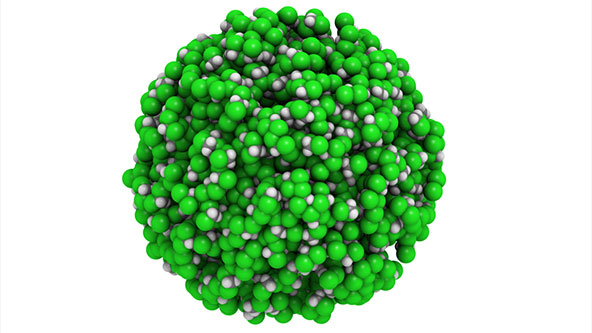Dichloromethane (also commonly known as Methylene Chloride, Methylene Dichloride, Di-clo and DCM) is a clear, slightly sweet smelling organic liquid chemical solvent which can be pose significant workplace safety risks if strict handling instructions are not followed.
Common Uses for Dichloromethane
Dichloromethane is used across a variety of industries, and is especially useful in chemical processes due to its ability to dissolve several organic compounds.
Some of the many ways dichloromethane is used are:
- As an active ingredient in organic-based paint strippers
- In the manufacturing of pharmaceuticals and other medicines
- aerosols for insecticides and spray paint
- the manufacturing techniques for creating decaffeinated coffee beans and tea leaves
- To prepare flavorings in the food and beverage industries
Understanding the Potential Hazards of Dichloromethane
Classified as a neurotoxin, dichloromethane has been proven to cause damage to the brain and central nervous system (CNS). The Environmental Protection Agency (EPA) has classified it as a probable human carcinogen since high levels of exposure to the chemical has been proven to cause liver and lung cancer in animals.
The following health risks are associated with exposure to dichloromethane:
Inhalation – can cause coughing, wheezing and/or shortness of breath. Higher levels of dichloromethane inhalation can lead to headache, mental confusion, nausea, vomiting, dizziness and fatigue.
Skin Exposure – Redness and irritation may occur if skin comes in contact with liquid dichloromethane and, if it remains on the skin for an extended period of time, it may lead to skin burns.
Eye Exposure – Contact with eyes can cause severe irritation and possibly chemical burns to the eyes.
Safety Precautions When Handling Dichloromethane
When handling dichloromethane in the workplace, use the following safety precautions:
- Wear protective clothing. Footwear should cover the entire foot.
- Always wear PPE such as chemical splash goggles and safety gloves.
- Work in a well-ventilated area (preferably in an environment with a fume extraction system).
What to Do When Exposed to Dichloromethane
Here are the safety steps that need to be taken if exposure you or someone else is exposed to dichloromethane occurs:
Eye Contact
Immediately flush eyes with large amounts of water for at least 30 minutes. If applicable, remove contact lenses when flushing. Seek medical attention.
Skin Contact
Immediately remove contaminated clothing and wash skin with large amounts of soap and water. Seek medical attention if any irritation occurs.
Inhalation
Individual should be removed from exposure area and immediately moved to an area with fresh air. Seek medical attention immediately if any difficulty breathing occurs.
Handling Dichloromethane Spills and Leaks
In the event a dichloromethane chemical spill or leak occurs, several steps need to be taken:
- Remove personnel from area
- Secure and control entrance to the area
- If safe, stop or reduce the spill/leak
- Absorb liquids in a material such as dry sand earth, or a similar material, and place into sealed containers
- Ventilate area of spill or leak
- Do NOT wash into sink or sewer
Safe Storage of Dichloromethane
Dichloromethane is highly volatile and should be stored in a cool, dry area in tightly closed, labeled containers. This chemical needs to be kept away from metals, light and any source of heat or ignition.
Large containers of this chemical should be placed on low, enclosed shelves to avoid the risk of accidental spills.
For more information on dichloromethane and other chemicals, browse our huge database of MSDS information.
